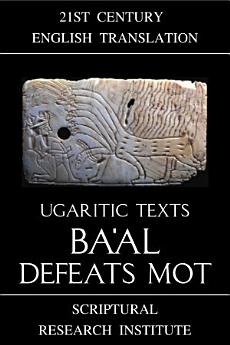Ugaritic Texts: Ba'al Defeats Mot
O ovoj e-knjizi
The Ba‘al Cycle is generally divided into several sections, based on the groupings of the tablets that were discovered, however, this series of translations is divided into just two sections, Victorious Ba‘al, and Ba‘al Defeats Mot. These divisions are always subjective. Some translators divide the central section regarding the building of Ba‘al’s Temple on Mount Zaphon from the preceding battle with Yam. Others also separate the intermediate section involving Ba‘al’s discussion with Anat, however, this series is divided based on the apparent shift in source material between the early section and the later section. The earliest section, as well as the conclusion of the second section, appears to be a translation from ancient Egyptian and includes Egyptian loanwords, as well as numerous references to the houses of the gods, which seems to be a reference to the system of decans used in Egypt from the Old Kingdom onward, to tell time at night. The 36 ancient Egyptian decans, or houses of stars, are accepted as the basis of pre-Babylonian astrological systems throughout Eurasia, including the systems used in India, China, and Japan. The numerous Egyptian loanwords are accounted for as the Ugaritic text being a translation of an Egyptian work, which appears to be what the postscript was referring to.
The main section of Ba‘al Defeats Mot appears to have been translated from an old Akkadian text that retold a Hurrian and Hattic story about two gods descending into the underworld. Many Akkadian, Hattic, and Hurrian loanwords are found in the text, which are generally missing from the earlier section, as well as the conclusion. The major exception being the messenger Ủgar, who was a Hurrian psychopomp, like the Canaanite Horon, and Greek Charon. As the city of Ugarit was named after him, this name clearly predates the text itself, and so it cannot be used to date the text. Nevertheless, does indicate that the city was originally a Hurrian settlement before becoming Semitic, which helps to explain why the older second section, appears to be a translation of an Akkadian retelling of a Hurrian story. Additionally, Luwian names are found in the second section, which places the origin of the Akkadian source text to sometime between when the Luwians settled in western Anatolia, generally dated to circa 2000 BC, and when the Hittites absorbed the Hattians around 1700 BC. As the text appears to have then been translated into Egyptian, before Ugaritic, it may trace the route the Hyksos took to Egypt, via the Luwian, Hattic, and Hurrian lands.










